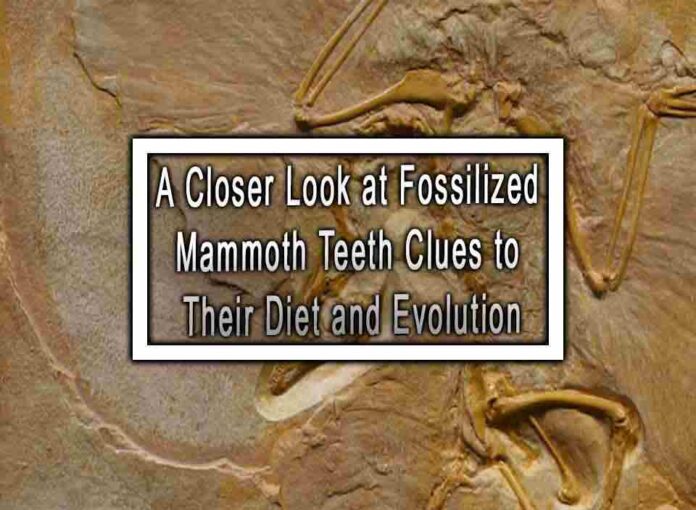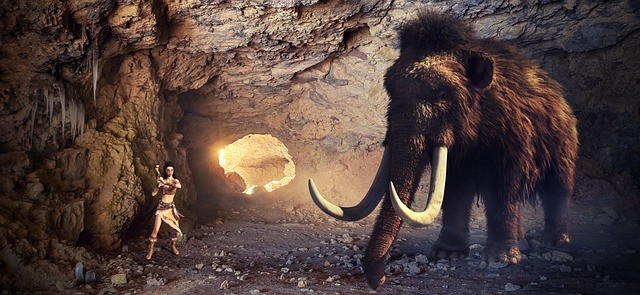Fossilized mammoth teeth provide valuable insights into the diet and evolution of these ancient creatures, as well as the ecosystems in which they lived. Mammoths were large, herbivorous mammals that roamed the Earth during the Pleistocene epoch. Here’s a closer look at what their teeth reveal:
1. Dental Structure and Adaptations:
- Mammoth teeth were adapted for grinding and processing plant material, which constituted their primary diet. Their teeth featured ridges and crests that allowed for efficient chewing of coarse vegetation, such as grasses, shrubs, and woody plants.

2. Diet Reconstruction:
- By analyzing the wear patterns, dental morphology, and the presence of microscopic plant remains trapped in the teeth, scientists can reconstruct the diets of mammoths. This information helps us understand what types of vegetation were available in their habitats and how they adapted to changes in food availability over time.
3. Evolutionary Changes:
- Studying the dental evolution of mammoths and comparing it to their ancestors and descendants can provide insights into how their diets and feeding behaviors changed over time. Changes in tooth structure and wear patterns can shed light on their interactions with changing climates and landscapes.
4. Isotopic Analysis:
- Isotopic analysis of fossilized mammoth teeth can reveal information about the types of plants they consumed and the environments in which they lived. Different types of plants have distinct isotopic signatures, which can be preserved in the teeth.
5. Dietary Adaptations:
- Mammoths inhabited a range of environments, from grasslands to tundra. Their teeth reveal how they adapted to different habitats and food sources. For example, mammoths living in colder climates might have had teeth better suited for consuming tougher and less nutritious vegetation.
6. Interactions with Climate Change:
- Changes in mammoth tooth morphology and diet can be correlated with shifts in climate. For instance, during glacial periods, mammoths may have adapted to a more abrasive diet due to the dominance of grasses in colder climates.
7. Human Impact:
- Fossilized mammoth teeth found in archaeological sites also provide insights into the interactions between mammoths and early humans. Tool marks on teeth can indicate butchery practices and human consumption.
Studying fossilized mammoth teeth is a multidisciplinary endeavor that combines paleontology, isotopic analysis, and other scientific methods. These insights contribute to our understanding of mammoth behavior, adaptations, and their role in past ecosystems.











